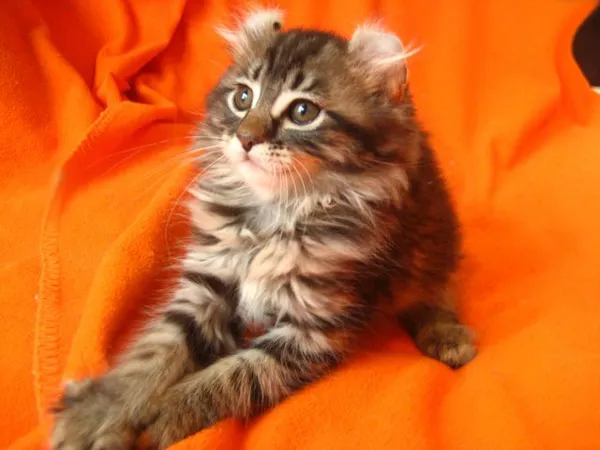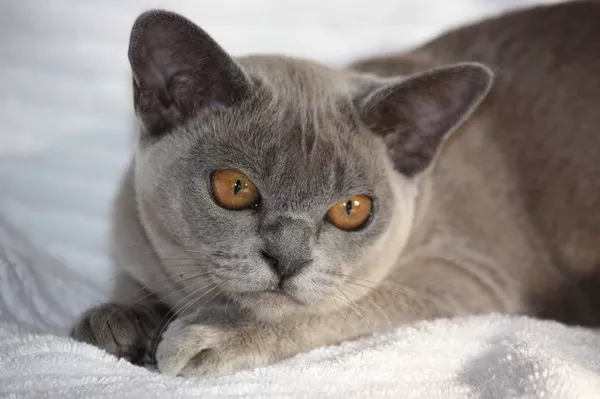The American Curl is a unique and beloved breed known for its distinctively curled ears and playful personality. While their charming and lively nature makes them endearing pets, it can also lead to a period of high energy and activity that some owners may find challenging. Understanding when American Curls typically calm down and implementing effective training strategies can help create a harmonious environment for both the cat and the owner. This article explores the developmental stages of American Curls, factors influencing their behavior, and provides comprehensive training tips to promote calmness.
Understanding the American Curl’s Behavior
Breed Characteristics
American Curls are renowned for their affectionate and sociable nature. They enjoy interacting with their human companions and often retain a playful demeanor well into adulthood. Their intelligence and curiosity can lead to mischievous behavior if not properly channeled. Knowing these breed characteristics is essential for setting realistic expectations regarding their activity levels.
Developmental Stages
Like all cats, American Curls go through several developmental stages, each with its own behavioral traits:
Kittenhood (0-6 months): This period is marked by rapid growth, high energy, and a strong drive to explore. Kittens are highly active, playful, and curious about their surroundings.
Adolescence (6-18 months): Adolescents continue to exhibit high energy levels but begin to show more independence. This stage often includes increased curiosity and testing of boundaries.
Adulthood (1.5-3 years): By the age of three, most American Curls have settled into their adult personalities. While they may still enjoy playtime, they tend to exhibit more balanced energy levels.
Senior Years (7+ years): Older American Curls typically become more sedentary and enjoy longer periods of rest. However, they still benefit from mental and physical stimulation.
When Do American Curls Calm Down?
Typical Age for Calming Down
American Curls generally begin to calm down as they transition from adolescence into adulthood, around 1.5 to 3 years of age. However, this can vary depending on individual temperament, environment, and lifestyle. Some may retain a playful spirit longer, while others may mellow out sooner.
Factors Influencing Calmness
Several factors can influence when and how an American Curl calms down:
Genetics: Individual temperament can be inherited from the parents. Some American Curls may naturally be more active or calm than others.
Environment: A stimulating environment with plenty of enrichment can help manage a cat’s energy levels. Conversely, a lack of stimulation can lead to boredom and hyperactivity.
Health: Health issues or discomfort can affect behavior. Regular veterinary check-ups ensure that the cat is healthy and not exhibiting unusual behavior due to medical reasons.
Neutering/Spaying: Sterilized cats often show a reduction in hyperactive behaviors. This procedure can contribute to a calmer demeanor.
Training Tips for Calming an American Curl
Establishing a Routine
Cats thrive on routine. Consistent daily schedules for feeding, playtime, and rest help provide structure, making cats feel secure and reducing anxiety-related behaviors. Establishing a routine can also help manage an American Curl’s energy levels by ensuring regular periods of activity and rest.
Providing Enrichment
Enrichment is vital for maintaining a cat’s mental and physical well-being. Here are some effective ways to provide enrichment for an American Curl:
Interactive Toys: Toys that stimulate hunting instincts, such as feather wands and laser pointers, can provide necessary physical exercise.
Puzzle Feeders: These feeders challenge the cat’s problem-solving skills and provide mental stimulation during mealtime.
Cat Trees and Scratching Posts: Vertical spaces and scratching surfaces allow cats to exercise and satisfy their natural behaviors.
Window Perches: Providing a view of the outdoors can keep a cat entertained and reduce boredom.
Training and Socialization
Training and socialization are key to managing an American Curl’s behavior. Positive reinforcement techniques can be particularly effective:
Clicker Training: Using a clicker to mark desired behaviors followed by a treat can help teach commands and tricks. This method enhances the bond between the cat and the owner.
Socialization: Early and ongoing socialization with people and other pets helps American Curls develop into well-adjusted adults. Exposing them to different environments, sounds, and experiences can reduce fear and anxiety.
Addressing Unwanted Behaviors
Unwanted behaviors, such as excessive scratching or biting, should be addressed promptly:
Redirecting Energy: Providing appropriate outlets for natural behaviors, like scratching posts, can prevent damage to furniture.
Time-Outs: Briefly removing the cat from a situation where it is misbehaving can teach boundaries without using negative reinforcement.
Consistency: Consistent responses to behaviors help cats understand what is expected. Mixed signals can confuse and lead to persistence in unwanted behaviors.
Promoting Relaxation
Encouraging relaxation and calmness can be achieved through various means:
Safe Spaces: Creating a quiet, comfortable area where the cat can retreat helps reduce stress and provides a sense of security.
Calming Aids: Products like pheromone diffusers, calming collars, and herbal supplements can help alleviate anxiety and promote relaxation.
Gentle Interaction: Calm, gentle handling and interaction, such as slow petting and soothing voices, can help an American Curl relax.
Exercise and Play
Regular exercise is essential for managing an American Curl’s energy levels:
Scheduled Playtime: Designating specific times for interactive play helps burn off excess energy and promotes a healthy routine.
Variety of Activities: Rotating different toys and activities keeps the cat engaged and prevents boredom.
Interactive Sessions: Playing together strengthens the bond between the cat and the owner while providing necessary physical and mental stimulation.
Diet and Nutrition
A balanced diet contributes to overall health and behavior:
Quality Food: Providing high-quality, nutritionally balanced cat food supports optimal health and energy levels.
Regular Feeding Schedule: Maintaining a consistent feeding schedule helps regulate metabolism and energy.
Hydration: Ensuring the cat has access to fresh water at all times is crucial for health and well-being.
Veterinary Care
Regular veterinary care is essential for identifying and addressing any health issues that could affect behavior:
Routine Check-Ups: Annual veterinary visits help monitor health and detect any problems early.
Dental Care: Dental health can impact overall well-being and behavior. Regular dental check-ups and cleanings are important.
Vaccinations and Preventatives: Keeping up with vaccinations and parasite prevention protects the cat’s health and prevents illnesses that could affect behavior.
Conclusion
Understanding when American Curls typically calm down and implementing effective training strategies can lead to a more harmonious relationship between the cat and its owner. While American Curls generally start to mellow out around 1.5 to 3 years of age, individual variations are common. Providing a structured routine, enriching the environment, and using positive reinforcement training techniques can help manage their energy levels and promote a calm demeanor. By addressing unwanted behaviors, encouraging relaxation, ensuring proper exercise and nutrition, and maintaining regular veterinary care, owners can support the health and happiness of their American Curl, resulting in a well-adjusted and content feline companion.























